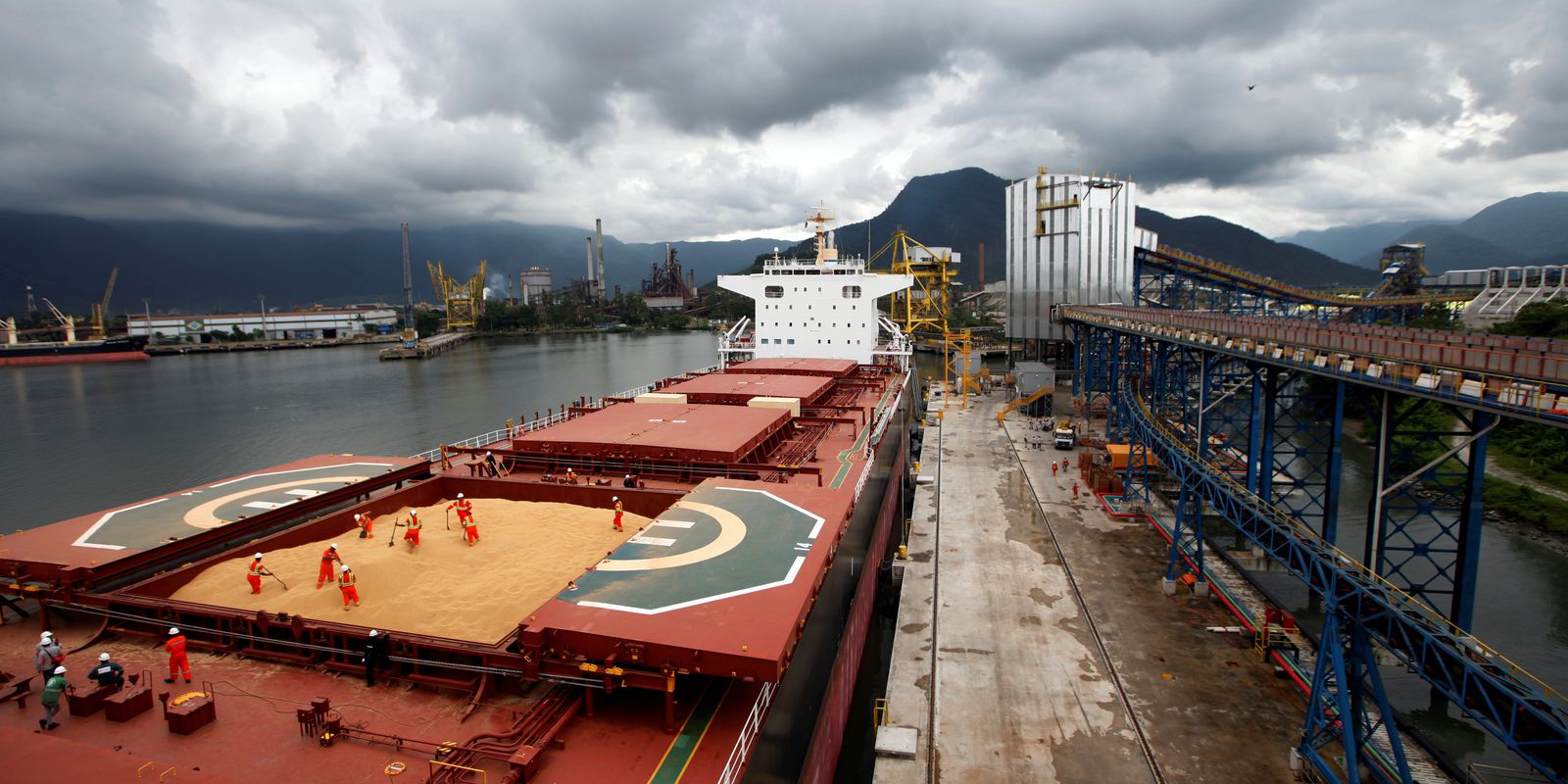The good performance of the grain harvest and the recovery of meat exports caused the trade surplus to double in October. Last month, the country exported US$ 3.921 billion more than it imported – an increase of 90% compared to the US$ 2.064 billion registered in October last year. This is the third best result for the month, only losing to October 2020 and 2018.
From January to October, the trade balance accumulates a surplus of US$ 51.64 billion. This represents 11.7% less than recorded in the same months last year. Despite the decline, the balance is the second best in history for the period, losing only to the first ten months of 2021, when the surplus had closed at US$ 58.504 billion.
Last month, Brazil sold US$ 27.299 billion abroad and bought US$ 23.378 billion. Both imports and exports hit a record in October, since the beginning of the historical series, in 1989. Exports rose 27.1% in relation to October last year, according to the daily average criterion. Imports, however, increased at a faster pace, 19.8% in the same comparison.
In the case of exports, the record is due more to the increase in shipments than in the international prices of goods and the volume traded. Last month, the volume of exported goods rose by an average of 14.4% compared to October last year, while average prices increased by 5.7%.
The appreciation of the prices of goods sold abroad could have been greater were it not for the fall in iron ore, whose price fell 33.9% in the same comparison, and for semi-finished iron or steel products, whose price fell 26%, for cause of lockdown in China, which reduced international demand.
In imports, the quantity purchased rose 6.7%, reflecting the recovery of the economy, but average prices increased at a more intense pace: 11.1%. The rise in prices was mainly driven by manures, fertilizers, oil, coal and wheat, items that became more expensive after the start of the war between Russia and Ukraine.
sectors
In the agricultural sector, the increase in the volume shipped, caused by the grain harvest, weighed more on exports. The volume of goods shipped increased 49.7% in October compared to the same month in 2021, while the average price rose 24.3%. In the manufacturing industry, the amount exported rose 16.1%, with the average price increasing 8.3%.
In the extractive industry, which includes the export of minerals and oil, the amount exported fell 8.4%, and average prices dropped 15.4% in relation to October last year.
Crude oil, which until last month drove the increase in exports, was stable, with the volume exported falling 0.1% and prices rising 0.6%. This is because the price of oil began to skyrocket in the last quarter of last year, when the global economy reheated with the advance of vaccination against covid-19.
The most prominent products in agricultural exports were unground corn, except sweet corn (468%), unroasted coffee (53.9%) and soybeans (52.5%) in agriculture. The negative highlight was vegetables, whose exports fell 27.9% from October last year to October this year.
In the mining and quarrying industry, the greatest growth was registered in exports of non-agglomerated coal (137,845%), other crude minerals (138.2%) and copper ore and concentrates (22.2%). In the manufacturing industry, the highest increases occurred in fresh beef (173.5%), sugars and molasses (90.6%), soybean meal, meat and other animal meal (69.1%).
As for imports, the biggest increases were registered in the following products: latex and natural rubber (37.6%), fruits and nuts (21.1%) and unmilled barley (15.8%), in agriculture; crude oil (325.1%) and fertilizers (149.8%), in the extractive industry; and fuels (22.6%), thermionic valves and tubes (59.7%) and organo-inorganic compounds (71.4%), in the manufacturing industry.
Regarding fertilizers, the growth in imports is entirely due to the price, which rose 29.4% in October compared to the same month last year. Imported volume dropped 36.6% because of the war between Russia and Ukraine.
I estimated
In October, the government reduced to US$ 55.4 billion the estimated trade surplus this year. Despite the drop in the estimate, this value would guarantee the second largest trade surplus in the historical series. The balance would only be smaller than the surplus of US$ 61.407 billion observed last year.
Official estimates are updated every 3 months. Forecasts are more pessimistic than those of the financial market. The Focus bulletin, a survey of market analysts released every week by the Central Bank, projects a surplus of US$ 58.6 billion this year.








